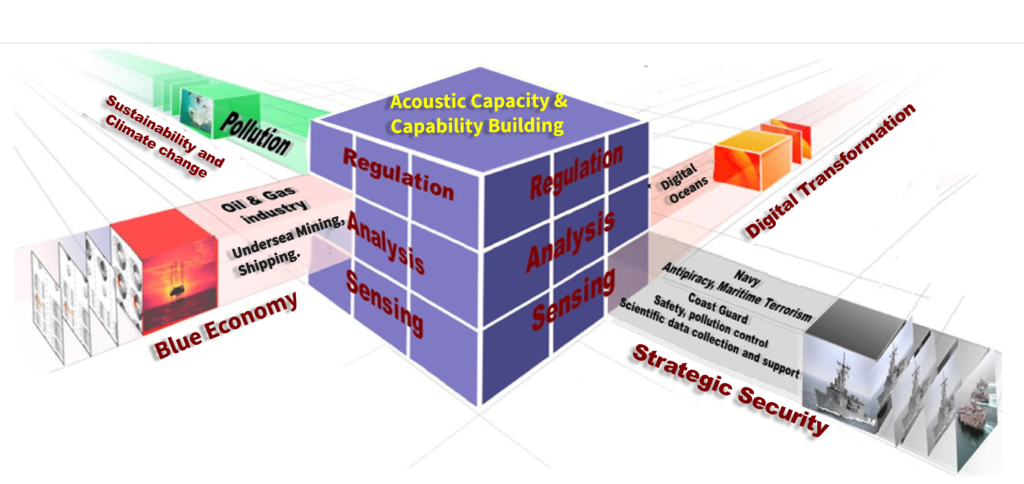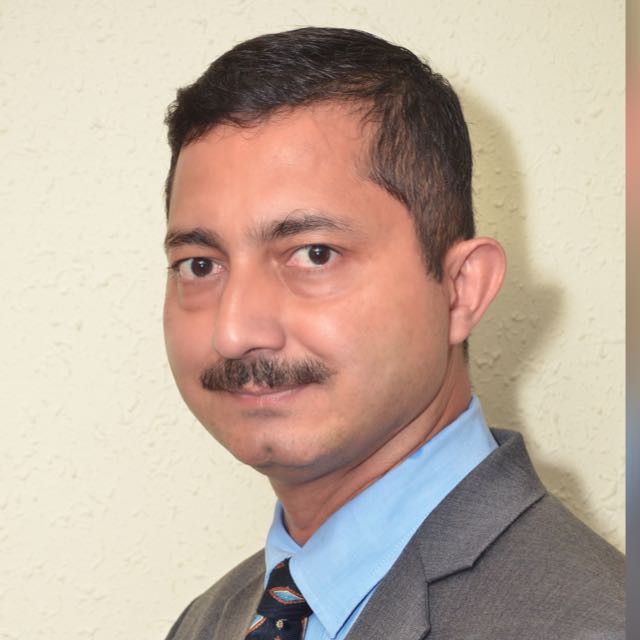- The IOR faces a unique situation, where there are several inherent strengths, however the weaknesses far outweigh the strengths to ensure poor governance.
- The complete surrender to Western know-how and technology has caused extensive manipulation by these entities to deprive us of our legitimate growth potential on natural resources.
- The UDA framework has been translated into a pilot project namely “100 Coastal Warriors”, that will demonstrate the relevance of this concept with significant scientific temper but rooted in Indigenous knowledge and practices.
- The SAGAR vision envisages a leadership role for India in the IOR, and the UDA framework-driven digital transformation will be the most effective and efficient diplomatic tool for India in the region and beyond.
The Indian Ocean Region (IOR), has become the global center of gravity, geopolitically and geo-strategically. Every global power wants to maintain its strategic presence in the region to ensure its dominance in the global power play. The extra-regional powers have a peculiar way of ensuring their dominance in any region. They disrupt the local governance mechanism and meddle in domestic politics to ensure complete surrender by all arms of the governance mechanism. This cripples the capacity and capability of the governance mechanism to deliver any service for the growth and prosperity of the nation.
The IOR faces a unique situation, where there are several inherent strengths, however the weaknesses far outweigh the strengths to ensure poor governance. Let us look at the strengths first:
- Demographic advantage of a young aspirational population.
- Rich biodiversity with significant potential for commercial exploitation.
- Massive mineral reserves for substantial blue economic growth.
- Long coastline for seamless connectivity across the region.
- Rich maritime heritage with huge traditional knowledge.
- Reasonable economic strength to drive new initiatives.
- Robust academic and research infrastructure to drive regional initiatives.
Now let’s look at the weaknesses in the same order to appreciate the causes of poor governance mechanisms:
- The lack of appropriate skilling and capacity-building mechanisms has ensured that this young aspirational population is not employable. There is a massive disconnect between the skills and the job description.
- The over-dependence on Western technology and know-how has completely marginalized the traditional practices, resulting in a massive income gap between the artisanal fishing communities and the mechanized, corporate-driven fisheries and aquaculture. The reality is that 90% of the population is involved in traditional practices and earns only 10% of revenue, whereas 10% of people involved in corporatized industrial fisheries and aquaculture earn 90% of revenue. The massive tilt towards corporate has ensured the erosion of traditional practices and massive degradation in the local ecosystem. This leads to an imbalance in socioeconomic and socio-political status causing inequality & volatility in society.
- The complete surrender to Western know-how and technology has caused extensive manipulation by these entities to deprive us of our legitimate growth potential on natural resources. These extra-regional powers completely disregard our sustainability & climate change concerns. It may be noted that the tropical waters are unique and these western entities have developed their knowhow and technologies for the temperate and polar waters. The sonars used for acoustic survey suffer 60% degradation when deployed in the tropical region, compared to the temperate & polar waters. It may further be noted that these entities do not have the demographic strengths to deploy human resources to customize their technology and know-how for our condition. They only supply canned solutions that do not meet our specifications. In effect, we pay a heavy price for sub-standard solutions.
- The long coastline offers massive potential for blue economic growth and connectivity, however, we are only facing the vulnerability of natural disasters and sustainability concerns. The strategic security vulnerability only ensures massive outgo for military hardware at the cost of investment in Science & Technology (S&T). The Western powers are building false narratives and massive security boogey to pump their military hardware developed during the Cold War Era as a means for their Return on Investment (RoI). The fragmentation among the stakeholders, namely strategic security, blue economy, sustainability & climate change risk management, and S&T is ensuring sub-optimal resource deployment for building good governance mechanisms.
- The Indian sub-continent boasts of 10,000 years of civilizational legacy. The traditional knowledge and practices have ensured growth and prosperity at an unimaginable scale. However, the subjugation by the European powers completely eroded our maritime consciousness and made us sea blind. The Western influence started a trend that attempted to completely replace the traditional practices by their so-called modern tools. Scientific temper has to blend with indigenous knowledge and practices. The native communities found themselves completely at sea in this new invasion of ideas and governance mechanisms. Our decision-makers started taking too much pride in their Western education, completely undermining the local appreciation of know-how, culture, and scientific temper.
- India has developed reasonable economic muscles being the fourth largest economy and offering a huge market to the west. This is a significant bargaining chip for us to negotiate our interests and focus on our own capacity & capability building. Only a change in mindset is required and we are there. We have to plan our requirements and seek specific assistance from the West, rather than completely surrender. This aspect will be discussed later in the paper to illustrate further.
- The Indian talent is appreciated all over the world and our experts have contributed massively to the global growth in varied fields. However, we have failed to create the ecosystem to firstly retain these talents and also to make them contribute to our growth and prosperity.
- The sustained effort with clear goals for real-world problem-solving requires continuity and a holistic approach. The pooling of resources and synergizing of efforts is the key to ensuring optimal resource deployment. Our own academic and research infrastructure is serving to produce export quality talent for the Western requirement. The absence of real-world data for our Indian sub-continent has ensured that our research is either lab-based or at best we use Western data to field validate our research. There is no mechanism to solve our real-world problems about our unique site-specific issues.
People, Economy, and Nature
The strategic perspective in any initiative has to include people, economy, and nature. There has to be balance across all the three and the governance mechanism has to recognize the importance of each to build an equitable system.
People The native communities have to be factored into the development process. More often than not, we observe that they are the biggest victims of any big project in terms of their displacement from their native location with inadequate compensation. Their livelihood gets completely disrupted as their traditional practices get destroyed and the new opportunities have no connection with their indigenous knowledge. These indigenous communities have developed their traditional knowledge and practices with centuries of evolution, so to expect them to adapt overnight to a new and alien occupation is unfair. The new projects largely hire migrant labourers and ex-pats, who have no understanding and attachment to the local ecosystem, so they lack any emotional ownership to be sensitive to the sustainability or climate change risk concerns. The marginalization of the local indigenous communities causes serious social unrest and political volatility, that continues for a long term.
Economy The short-term profit motive pursued by the outsiders (corporates and the extra-regional powers) results in sustainability crisis and climate change risk concerns. The disconnect between the interest of native communities (who have voting rights and thus political influence) and the taxpayers (corporates who make large profits), ensures policy gaps for seamless development. Such a poor governance mechanism is a sure recipe for bad economics. Investments are extremely hard to get and thus, we continue to suffer the tyranny of commons and the tyranny of small decisions. The natural resources get exported out with minimal value addition, thus the return on investment is unsustainable for the local businesses. The complete lack of scientific temper and long-term planning makes the capacity of the local governance mechanism to deliver anything meaningful and sustainable. It fails to develop the agility to adapt to the changing dynamics, socio-economically, socio-politically and socio-culturally.
Nature The sustainability and climate change risk has become the highest priority for the human race and its survival. However, we are yet to install the mechanism that will ensure arresting this downward trend. The belief that modern science and know-how can completely replace indigenous knowledge and practices, has resulted in disastrous outcomes. The fragmented approach across the multiple sectors and also among the multiple policy arms of the governance mechanism is further caused irreversible damage. The holistic approach is completely missing to ensure complete harmony with nature. Overuse of natural resources and then further overuse to overcome the side effects has resulted in a vicious cycle of unsustainability and climate change risk crisis. Sustainability and climate change risk management has become a business model, rather than being an integral part of the conceptualization stage.
We will further discuss, how the Underwater Domain Awareness (UDA) framework can ensure, balance among these three critical pillars of people, economy & nature.
Underwater Domain Awareness (UDA) Framework
The UDA framework provides a comprehensive, structured, and inclusive mechanism to ensure nuanced policy & technology interventions along with the acoustic capacity & capability building to prove a safe, secure, sustainable growth model for all in the tropical waters of the IOR. The figure-1, below provides the schematic representation of the UDA framework. The UDA framework takes a holistic view and encourages the pooling of resources and synergizing of efforts to ensure optimum resource deployment for the global south. The blending of local indigenous knowledge and modern tools for digital transformation is the best way forward.

The UDA framework will be the driver for digital transformation, considered the most critical tool for good governance. We will not go into the details of the Marine Spatial Planning (MSP) mechanism for implementing the digital transformation, but continue our focus on the people, economy, and nature. The digital transformation will require three kinds of human resources:
High-End Data Scientists The management of the hardware and software along with the computational infrastructure will require these high-end data scientists. They may come from the premier technical institutes. Some of the local community youth could be incentivized to be part of this elite group and contribute directly to their local real-world problem-solving. Specific research, academic, and innovation programs, designed to address the tropical characteristics will be required.
Domain Specialists The data inputs need to be interpreted based on the application, sector, geography, etc., to evolve nuanced policy and technology interventions. This will involve multi-disciplinary experts with a reasonable understanding of the local dynamics to build on the broader framework. The local youth can certainly aspire to educate themselves and join this initiative and remain in their native location and build a meaningful career. Local academic institutions can build on such programs to allow a seamless transition of the local youth to such programs
Field Deployment Specialists The field experimental validation and sample collection will require the deployment of skilled human resources to the waterfront throughout the year. Such deployments in rough weather and in some critical locations require specialized skills. The local native communities with their traditional practices are the best suited for such deployments. In fact, these communities can teach most of us from urban locations how to deal with the waterfront. The local native community youth could be imparted some specialized skills to handle the field experimental validation and sample collection to make them part of the entire development process. Environment Impact Assessment (EIA), Aquaculture, Sediment Management, Acoustic Survey, and many more such applications will require massive amounts of field deployments. Thus, the local youth can be an asset for such deployments.
Conclusion
The Security And Growth for All in the Region (SAGAR) vision of the Government of India, way back in 2015, has a lot of distance to cover on the ground. The government has also announced multiple mega projects, namely the Sagarmala, Gati-Shakti, Inland Water Transport, Deep Ocean Mission, and many more. However, these projects continue to be driven by the Nordic countries, which have the least understanding of tropical characteristics. Indigenous capacity and capability development has been a non-starter and thus
The UDA framework has been translated into a pilot project namely “100 Coastal Warriors”, that will demonstrate the relevance of this concept with significant scientific temper but rooted in Indigenous knowledge and practices. The pilot will be pegged on five pillars of research, knowledge, skilling, innovation, and strategy to manage the local site-specific challenges and opportunities about the tropical waters of the IOR. The focus has been real-world problem-solving using indigenous knowledge and local resources (both human and know-how).
The implementation of such a new concept will require a nuanced approach. The three-step way ahead is proposed to build a seamless integration across the policymakers, stakeholders, practitioners, and the youth.
Outreach The cross-section of entities will have to be sensitized in a calibrated manner to integrate them into this new concept. Webinars, seminars, workshops, symposiums, and many more such interaction tools will have to be used. Generic followed by specific outreach events will have to be hosted to apprise the entire spectrum of individuals and entities.
Engage The outreach has to be followed by engagement across varied levels. The students and young professionals will have to be offered internships and fellowships to consolidate their association with this new initiative. A deeper understanding of the nuances will allow them to be assets for future project implementation. The stakeholders and policymakers will have to identify specific areas of their interest and define modes of association. The internships and fellowships could be sponsored and supported by these entities. Academia, research, and innovation institutes could start aligning their programs to this new concept.
Sustain The clarity of ideas and specific requirements will have to translate to long-term implementation projects. The projects will pertain to policy and technology interventions on the ground with complete turnkey implementation. Financing of these projects has to find funding sources ranging from governments, corporates, research funds, ESG grants, and more. The manpower developed during the internship and fellowship phase could be the leaders for this phase. Massive scale-up will have to be planned post this pilot phase so the structures and capacity & capability building mechanism has to be evolved to sustain it in the real-world scenario.
The entire Indian coast needs to be populated with such pilot projects to address the local requirements. The holistic approach comprising of global, regional, national, and local issues will have to be integrated and implemented using indigenous means. Each of our nine coastal states can have a 100 Coastal Warrior project to address the unique issues specific to their coast and the native community, guided by their local authorities.
The SAGAR vision envisages a leadership role for India in the IOR, and the UDA framework-driven digital transformation will be the most effective and efficient diplomatic tool for India in the region and beyond.

Dr (Cdr) Arnab Das, Director and Founder of MRC, Pune
About Author
Dr Das is an ex Naval officer with 2 decades of active services and PhD holder from IIT Delhi with specialization in Underwater Acoustics. He has worked on several projects and has a plethora of publications to his credit.


